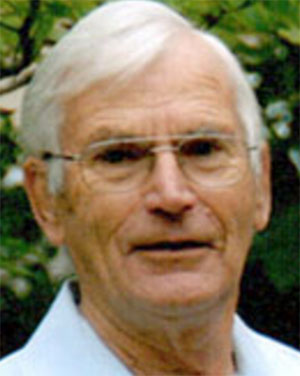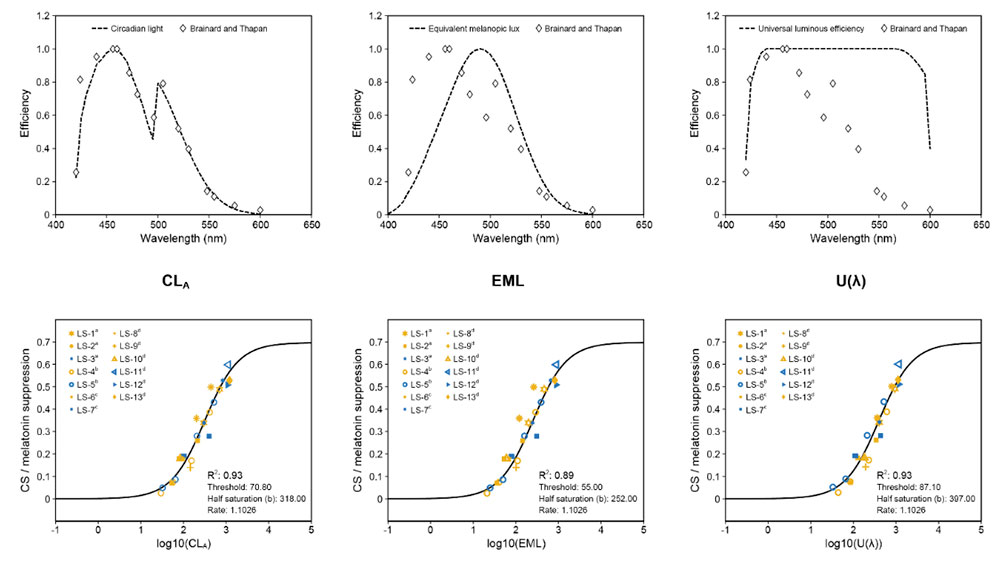Editorial Disclaimer
The views expressed in articles published on FIRES do not necessarily reflect those of IES or represent endorsement by the IES.
By Mark S. Rea, Ph.D.
Professor of Architecture and Cognitive Sciences at the Lighting Research Center (LRC) at Rensselaer Polytechnic Institute
Right after receiving my PhD, I took a position as a research scientist at the National Research Council Canada (NRCC) in Ottawa. It was a very good decision. The NRCC was populated and managed by scientists and engineers who understood their collective role as providing a solid foundation for decision-making by Canadian industry and politicians. I fit right into that culture. My boss’s boss was Dr. Don Stephenson (Figure 1), who oversaw energy research at the Division of Building Research. He took his responsibilities seriously and saw himself as the steward for good and effective research by our group. Don established a very simple yet powerful gauntlet to pass through before he would approve a new project or idea. Each proposal had to address the 3 Ps – Purpose, Precision, Product.

The first and last P are important, and perhaps obvious, for most researchers to consider: “What are you trying to achieve (Purpose), and what will be the deliverable (Product)?” It was the second P that I had never considered, but Precision is as important as the other two.[1] How much effort should be expended to bridge Product to Purpose? Don received his Doctorate from the University of London in Applied Physics but oversaw a team of researchers who had largely received their education in engineering. Engineers naturally, or through training, gravitate to high precision. Yet Don understood that high precision could be the enemy for accomplishing things in a reasonable time. With regard to low precision, the culture silently took care of that. Qualitative research was the anathema of our group.
Consider if you will that someone is presenting a circadian-effective lighting proposal to Dr. Stephenson. The proposal’s Purpose is to improve building occupants’ quality of life through lighting, and the Product should serve as a guideline for practitioners. But what about Precision? Simply posing the question undoubtedly makes one stop and think about the tradeoff between doing the science thoroughly and getting something done. The way I would have pitched my proposal to Don is, we should do both, and—knowing Don—he would likely say “Yes, do both in parallel, with an emphasis on implementing the guideline now.” Don loved the science, but he would never let the pursuit of basic knowledge prevent, or even slow down, progress in application. His degree, after all, was in applied science.
With regard to architectural practice aimed at delivering circadian-effective lighting, we now have enough basic knowledge and field demonstrations to confidently say that lighting in our buildings is too low during the day and, with the widespread use of self-luminous displays, our light exposures at night are too high. A lighting guideline regarding “how low” and “how high” demands quantification of the luminous stimulus as well as the expected benefit. UL 24480 (Underwriters Laboratories Inc. 2019) provides guidance at several levels of precision.
Basic science is always being worked out, but at one extreme UL 24480 describes a high-precision model of circadian phototransduction that predicts a wide range of data sets within acceptable experimental uncertainty and is grounded in the science of retinal neurophysiology. To apply the high-precision model, one needs to know exactly the spectral power distribution (spectrum and amount) at the cornea to determine whether the design criterion circadian stimulus (CS) (Rea & Figueiro 2018; Rea et al. 2005, 2010, 2012) has been reached or not. At the other extreme, UL 24480 provides a low-precision alternative that any practitioner can apply – provide a photopic illuminance of 500 lux in the vertical plane, and we’re done. Both recommendations in the UL 24480 Product serve an important Purpose, namely to support circadian entrainment and thereby improve sleep at night and reduce sleepiness during the day. The level of Precision one wants to pursue should only be limited by time, energy, and cost. But since people are the most important and most expensive part of a building, nothing should stand in the way of advancing circadian-effective lighting in buildings.
Of course, none of us is just starting out in the area of circadian-effective lighting. Indeed, we have been at this collectively for some time. There is a long-standing debate about what Product should be used to guide the implementation of circadian-effective lighting. That debate is compromising progress, which is something Dr. Stephenson would not have tolerated. The current debate is not about Purpose; on this everyone seems to agree. It has been about who owns the Product, while the needs of the public have remained largely unmet.
I would like to change the debate to the topic of Precision in an attempt to make progress. The two sets of three panels in Figure 2 show how three different spectral weighting functions affect predictions of spectral sensitivity (top row) and absolute nocturnal melatonin suppression by polychromatic “white” light sources (bottom row). Circadian light (CLA) represents a high-precision construct based upon the neurophysiology and neuroanatomy of the human retina (Rea et al. 2005). Equivalent melanopic lux (EML) represents a lower-precision construct based upon the action spectrum of just one photopigment in the circadian phototransduction process (Commission Internationale de l’Éclairage 2018 2020) (Lucas et al. 2014). The universal luminous efficiency function [U(λ)] represents the least-precise construct, based simply upon the spectral bandwidth defined by all five photopigments in the human retina (Rea 2015).

Predictions of spectral sensitivity are quite different. The high-precision construct (CLA) is much better than the lower-precision construct (EML) and very much better than the least-precise construct [U(λ)] for predicting relative sensitivities to different monochromatic wavelengths (top row, Figure 2). Looking at the bottom row of Figure 2, however, there is no clear distinction between the predictions. Dr. Stephenson would likely say, because he would never be part of the Product ownership debate, “In terms of practical “white” light sources, it doesn’t seem to make much difference. What’s holding things up?” The fact is, no person or organization should be holding things up and this is why UL 24480 was developed.

Still, it is worth looking at the pros and cons of each approach, while ignoring the problem of Product ownership, because low Precision might facilitate adoption. CLA represents the synthesis of several lines of research into a mathematical model of circadian phototransduction. But it’s complicated, mirroring the complicated neurophysiology of the human retina, making it perhaps more intimidating and therefore less likely to be implemented.
EML has the possible advantage of low precision and simplicity, but lacks a scientific foundation. Melanopsin alone does not accurately characterize spectral sensitivity of circadian phototransduction (see Figure 2, top-center graph), nor can any single photopigment be solely responsible for circadian phototransduction.
If low precision is what it takes to serve the public, U(l) offers two advantages. First, it is a good measure of polychromatic light as it stimulates the circadian phototransduction processes (see Figure 2, bottom-right graph) and offers no pretense that it is based upon the complex neural processing of the retina. Second, unlike CLA and EML, which are targeted specifically to circadian-effective light, U(l) has utility as a photometric quantity for characterizing the luminous stimulus for a wide range of phenomena, such as visual performance, off-axis detection, color rendering, and scene brightness (Rea & Bierman 2018). Although U(l) is a simple, low-precision approach, it is a highly effective measure of light that can facilitate, not just circadian-effective lighting, but also the many Purposes of lighting design.
But, seriously, it’s time to move past who owns the Product and simply decide what level of Precision is needed to meet our collective Purpose.
References
Brainard, G. C., Hanifin, J. P., Greeson, J. M., Byrne, B., Glickman, G., Gerner, E., & Rollag, M. D. (2001). Action spectrum for melatonin regulation in humans: evidence for a novel circadian photoreceptor. Journal of Neuroscience, 21(16), 6405-6412. doi:10.1523/JNEUROSCI.21-16-06405.2001
Commission Internationale de l’Éclairage. (2018). CIE system for metrology of optical radiation for ipRGC-influenced responses to light CIE S 026/E:2018 (Vol. CIE S 026/E:2018). Vienna: Commission Internationale de l’Éclairage.
Commission Internationale de l’Éclairage. (2020). CIE S 026 α-opic Toolbox – v1.049 – 2020/03/26. Vienna: Commission Internationale de l’Éclairage.
Lucas, R. J., Peirson, S. N., Berson, D. M., Brown, T. M., Cooper, H. M., Czeisler, C. A., . . . Brainard, G. C. (2014). Measuring and using light in the melanopsin age. Trends in Neurosciences, 37(1), 1-9. doi:10.1016/j.tins.2013.10.004
Nagare, R., Rea, M. S., Plitnick, B., & Figueiro, M. G. (2019a). Effect of White Light Devoid of “Cyan” Spectrum Radiation on Nighttime Melatonin Suppression Over a 1-h Exposure Duration. Journal of Biological Rhythms, 34(2), 195-204. doi:10.1177/0748730419830013
Nagare, R., Rea, M. S., Plitnick, B., & Figueiro, M. G. (2019b). Nocturnal Melatonin Suppression by Adolescents and Adults for Different Levels, Spectra, and Durations of Light Exposure. Journal of Biological Rhythms, 34(2), 178-194. doi:10.1177/0748730419828056
Nagare, R., Plitnick, B., & Figueiro, M. G. (2019c). Effect of exposure duration and light spectra on nighttime melatonin suppression in adolescents and adults. Lighting Research & Technology, 51(4), 530-540. doi:10.1177/1477153518763003
Rea, M. S. (2015). The lumen seen in a new light: Making distinctions between light, lighting and neuroscience. Lighting Research & Technology, 47(3), 259-280. doi:10.1177/1477153514527599
Rea, M. S., & Bierman, A. (2018). A new rationale for setting light source luminous efficacy requirements. Lighting Research & Technology, 50(3), 340-359. doi:https://doi.org/10.1177/1477153516668230
Rea, M. S., & Figueiro, M. G. (2018). Light as a circadian stimulus for architectural lighting. Lighting Research & Technology, 50(4), 497-510. doi:10.1177/1477153516682368
Rea, M. S., Figueiro, M. G., Bierman, A., & Bullough, J. D. (2010). Circadian light. Journal of Circadian Rhythms, 8(1), 2.
Rea, M. S., Figueiro, M. G., Bierman, A., & Hamner, R. (2012). Modelling the spectral sensitivity of the human circadian system. Lighting Research & Technology, 44(4), 386-396. doi:10.1177/1477153511430474
Rea, M. S., Figueiro, M. G., Bullough, J. D., & Bierman, A. (2005). A model of phototransduction by the human circadian system. Brain Research Reviews, 50(2), 213-228. doi:10.1016/j.brainresrev.2005.07.002
Thapan, K., Arendt, J., & Skene, D. J. (2001). An action spectrum for melatonin suppression: Evidence for a novel non-rod, non-cone photoreceptor system in humans. The Journal of Physiology, 535, 261-267. doi:10.1111/j.1469-7793.2001.t01-1-00261.x
Underwriters Laboratories Inc. (2019). Design Guideline for Promoting Circadian Entrainment with Light for Day-Active People, Design Guideline 24480, Edition 1. Northbrook, IL: Underwriters Laboratories Inc.
[1] For the alliterative reason, I am using precision synonymously with accuracy.
Editor’s note: For the IES Position Statement on UL Design Guide 24480, please click here.

